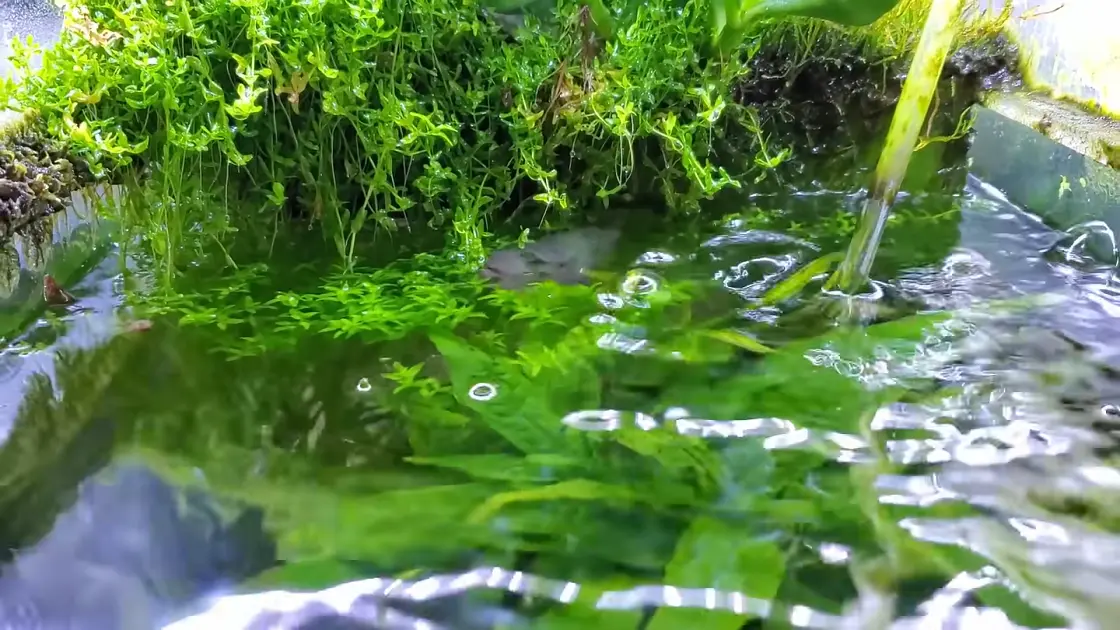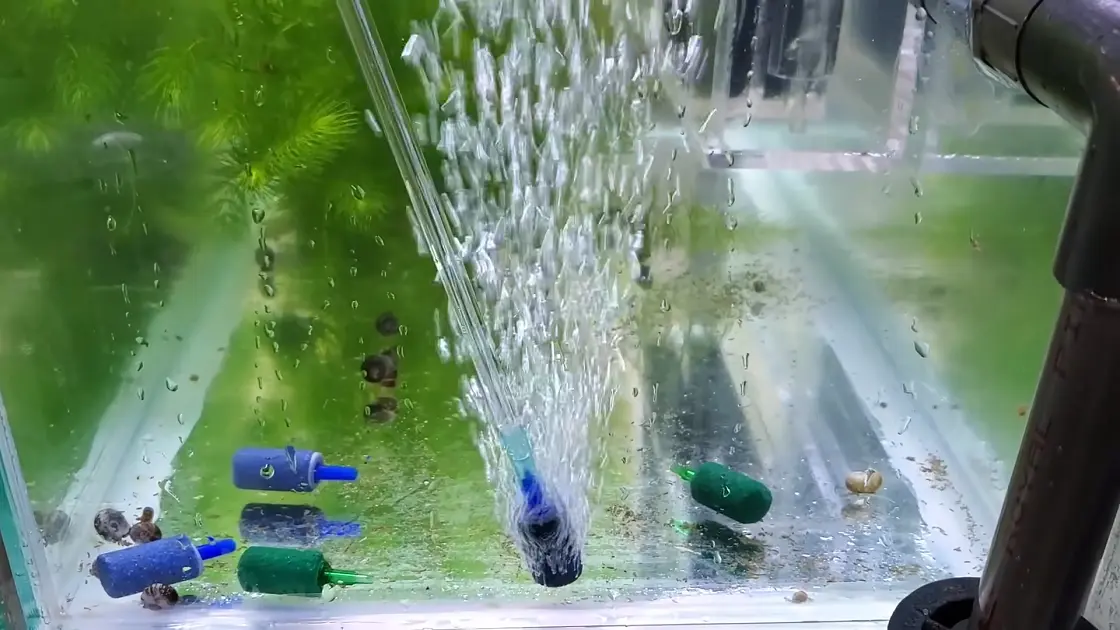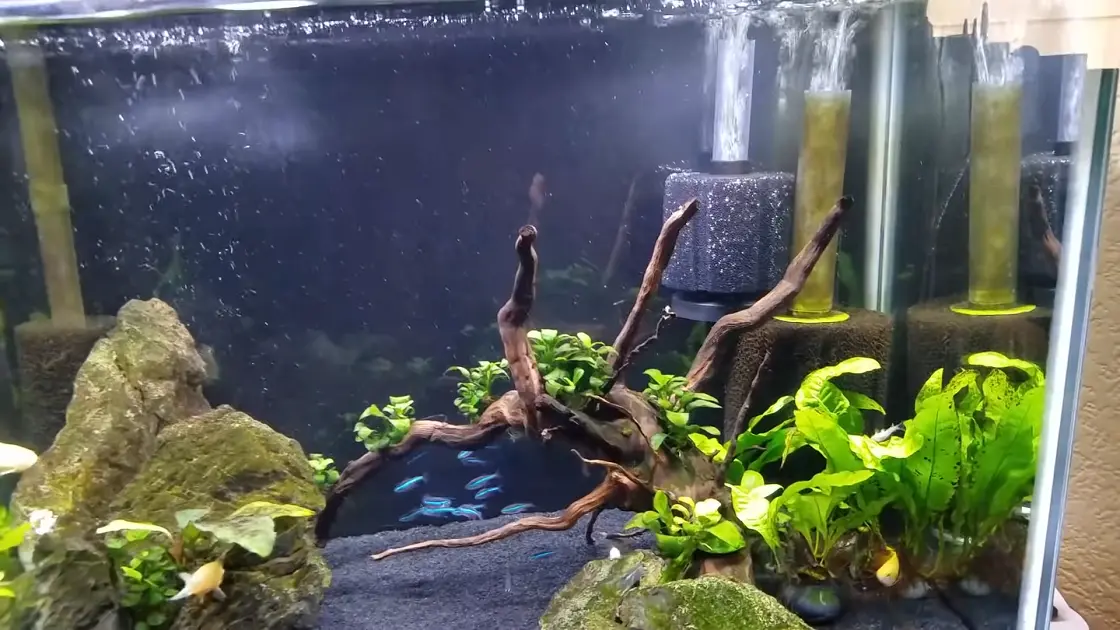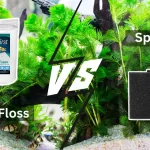How are air stones and sponge filters different, and is it better to have both? What happens if you combine them? Who wins the battle of airstone vs sponge filter? When talking about the employment of air stones in fish tanks, these are complications that generally come up. A key difference between an air stone and a sponge filter is that the first only displaces oxygen in the water.
In contrast, the other filters the water and oxygenates it as well. Both are operated by an air compressing pump. However, by introducing an air stone into the sponge filter, you can enjoy the combination of the two.
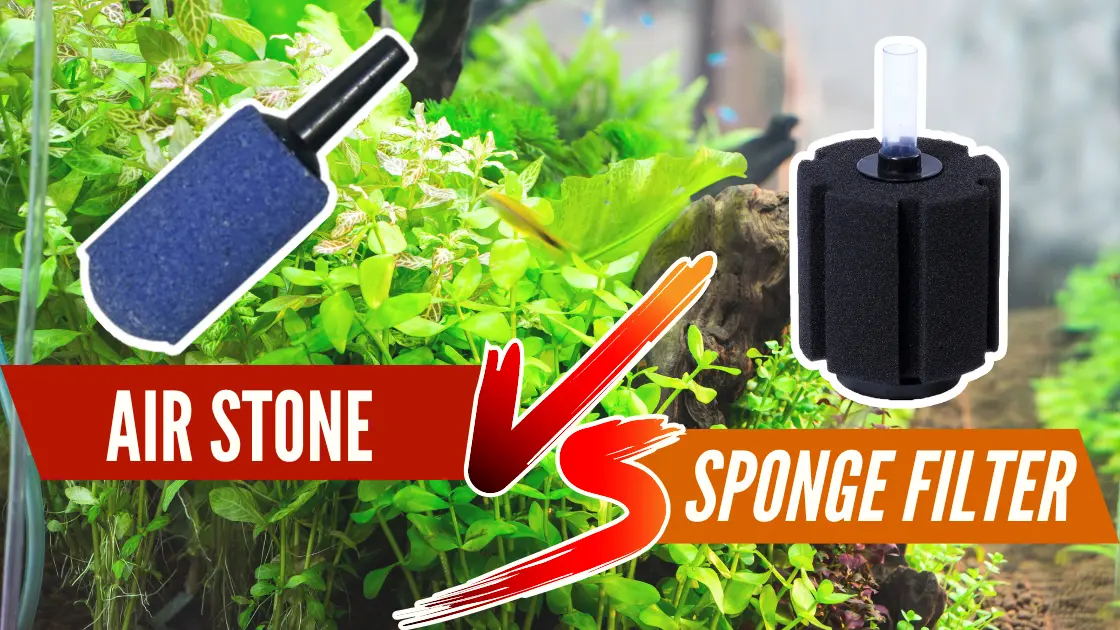
Airstone Vs Sponge Filter:
In the fight of airstone vs filter, when selecting between an air stone and a sponge filter for a fish tank, several factors need to be taken into consideration. The dimensions of the fish water tank, the species of fish, and the extent of upkeep demanded all seem to be essential factors to take into account. The purpose of sponge filters is precisely the same as that of air stones: they eliminate hovering waste while delivering oxygen into the aquatic environment.
However, most of the sponge filters only come with a suction hose connection, one that only produces giant bubbles. These bigger bubbles are much less economical and generate a great deal of noise. The water is significantly more properly oxygenated and is far calmer when it has been broken up into thousands of tiny bubbles by an air stone compared to just a few large bubbles.
Air Stones:
-
What Exactly Is An Air Stone?
When a pitcher of water needs to be naturally carbonated, a tiny, smooth stone is used as an air stone. This creates the opportunity for the water to hold additional oxygen, which aids in preserving the well-being and nutrition of the fish.
-
Air Stone As Filters:
In the battle of air stone vs filter, the answer is a strong “yes” if you are worried about your fish’s wellness. If your fish tank has a filtration that is operated by an air pump, an air stone will be exceptionally advantageous. It will help the filter work more seamlessly and effectively. Naturally, it is also going to beautify the overall look of your fish tank.
-
Putting An Air Stone In A Sponge Filter:
A sponge filter can be upgraded upon by the installation of an air stone to create a more productive and effective water filter system. The filter will be able to break down and remove sediments as well as other microscopic bits from the water more thoroughly if an air stone is included. Clarity and fundamental grade of the water will both improve as a consequence of this step.
-
Using An Air Stone Instead Of A Filter:
Talking about the air stone vs sponge filter, in a fish tank, an air stone can be used in place of a filter, even though this is not still a clever decision. An increase in water agitation generated by an air stone could lead to problems such as overfeeding, blocked filtration, and water heating. It also is essential to keep in account that an air stone somehow doesn’t operate as a filter does in terms of trapping microorganisms as well as other impurities.
-
Can Fish Survive On Nothing But An Air Stone?
Do air stones operate well enough in fish tanks? Yes! In addition to enhancing fish longevity, they control the water flow. There might not be a cause for your water tank should really not to have an air compressor or stone that supplies oxygen.
-
The Average Lifespan Of Air Stones:
According to a few estimates, air stones begin to lose their efficiency after using them for approximately six weeks. However, this varies depending on the number of mineral elements in your water.
-
Advantages Of An Air Stone For Marine Life:
What Are the Advantages of Using an Air Stone? For a wide range of purposes, installing an air stone or bubble within your fish tank is useful. By dispersing oxygen-rich tiny bubbles all through the tank, air stones work in combination with fish tank blowers to assure that your fish tank and fish stay in the most incredible feasible shape.
Sponge Filters:
-
Sponge Filters Are Great Filters:
The least amount of care expected by sponge filters makes them extraordinarily practical. All you are required to do is to unblock a blocked filter and clean it. Moreover, sponge filters are a highly economical option since they do not necessitate any replacing supplies.
-
Sponge Filter | Superior To Standard Filters:
Sponge filters perform well enough in smaller, more settled fish tanks with fragile species and minimal flow of water demands. However, they are not the ideal choice for each fish tank arrangement. They aid in oxygenating the water by screening out bigger particles even while having beneficial bacteria and also being operated by an air pump.
-
Use A Sponge Filter As An Air Stone:
When talking about the air stone or sponge filter, A sponge filter will not serve as an air stone. In order to transport water and oxygen through the filter, air stones utilize tension and gravitational pull. Sponges cannot operate as an efficient air stone simply because they do not create considerable compression.
-
Without An Air Pump, How Do You Utilize A Sponge Filter?
A sponge filter is a kind of water filtration system that traps contaminants using only a sponge. It is essential to immerse the sponges in water before employing it as a filter before an air compressing pump. After that, set the sponge just above the faucet. As soon as the sponge has collected all of the water, switch on the tap to the optimum flow of water. The sponge should then be taken away and placed in a garbage bag. Wait until the sponge has indeed soaked all of the water before depositing the bag in a storage container. Repeat the procedure until the filter is totally complete.
-
A Sponge Filter’s Method Of Functioning:
As water and germs flow through the openings of a spongy filter, it becomes efficient. Water and microorganisms are not able to flow through the openings because of their diminutive diameter. As a consequence, the water molecules can flow through the filters after the sponge tries to squeeze the water and microorganisms out of the perforations.
-
The Average Lifespan Of A Sponge Filter:
Tank water is pumped through a sponge in this form of filtration, which filters mechanically and ecologically. You should clean the sponge about every two weeks in order to ensure the filter is still working effectively.
-
The Main Purpose Why People Use Sponge Filters:
Sponge filters are the optimal choice for aquariums where you need to utilize a very moderate circulation. Any form of mechanical filtering will pull them up and destroy them if you are growing brine shrimp, fish fry, or even other tiny sea species.
-
Sponge Filters: Do They Keep The Water Clear?
The water is clean as it leaves the upper filter after flowing through the sponge’s porous matrix, which retains contaminants as it sucks water through it. Because the waste is contained inside the sponge, the water is usually clean and fresh. However, it is indeed a straightforward and inexpensive method to handle dangerous substances out of the water in your fish tank.
Frequently Asked Questions
Conclusion:
So now you better understand the battle of airstone vs sponge filter. It is determined by the particular requirements of your fish tank. In comparison to sponge filters, which are designed to have both filtering and oxygenation, air stones are generally used to agitate the water’s interface and move it.
A filter with an air stone might have been a wiser alternative if you are hunting for one that can oxygenate your water more thoroughly. On the other extreme, Sponge filters can become a better alternative if filtering is your primary consideration.
Also see: Fluval VS Marineland Canister Filter
